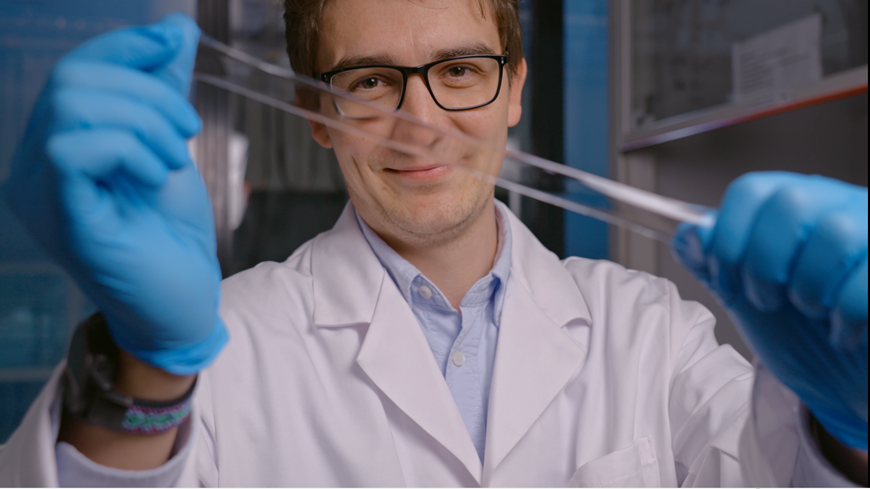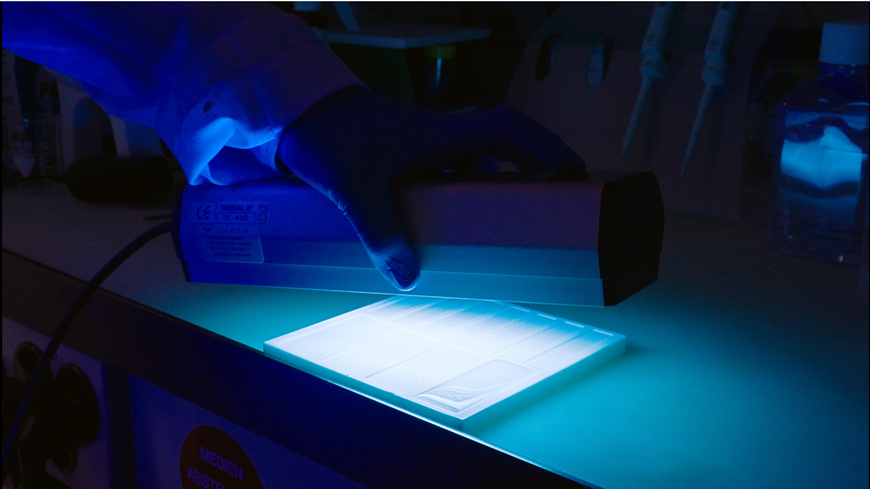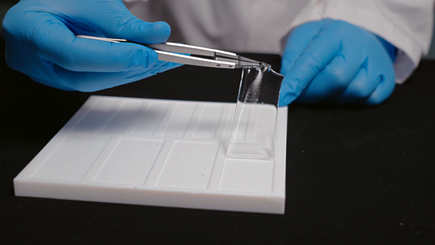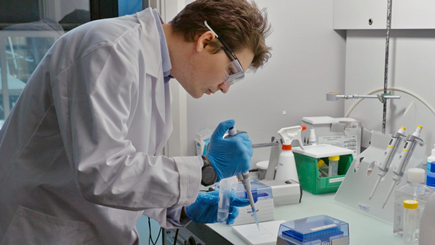A band-aid with sensor function
A "spy" in the belly
To ensure that wounds in the abdominal cavity remain tightly closed after an operation, researchers at Empa and ETH Zurich have developed a patch with sensors. The polymer patch reports dangerous leaks at sutures in the gastrointestinal tract and closes the sites automatically. The team recently published their findings in Nature Communications.

After an operation in the abdominal cavity, there is one special concern: leaks at the sutures where the contents of the digestive tract could escape into the abdominal cavity. "Even today, such leaks represent a life-threatening complication," explains Empa researcher Inge Herrmann, who also holds the professorship for Nanoparticular Systems at ETH Zurich. The idea of sealing sutured tissue in the abdominal cavity with a patch is not new. The problem, though, is that clinical success varies depending on the particular tissue that is stuck together. This is because the plasters, which are made of protein-containing material, dissolve too quickly when they come into contact with digestive juices. As part of a long-term collaboration, Inge Herrmann and Andrea Schlegel, a surgeon at the University Hospital Zurich, therefore pursued the idea of developing a resistant intestinal patch that can indicate leaks at an early stage using sensors.
Teaching the patch to "see"

The team led by Herrmann and Alexandre Anthis from Empa's Particles-Biology Interactions laboratory in St. Gallen and ETH Zurich's Nanoparticle Systems Engineering laboratory first developed a hydrogel polymer patch that prevents highly acidic digestive juices and germ-laden food residues from escaping from the intestinal tract and causing peritonitis or even life-threatening sepsis.
But the researchers wanted to go one step further: "Surgeons told us that although they do have a close eye on the surgical area during the operation, however complicated it may be – once the abdominal cavity is closed, they are "blind" and may not notice leaks until it is too late," says Anthis. So to help the hydrogel patch learn to "see," the team worked with hospitals in Switzerland and international research partners to develop a solution: The patch was equipped with sensors. The researchers recently reported on this novel technology in the renowned journal Nature Communications.
Biocompatible super glue
The

The sensor patch, on the other hand, makes it possible to detect digestive fluid leaking from a wound due to its composite structure. For instance, acidic gastric juices react with the sensor material, causing minute gas bubbles to appear in the matrix of the patch. The bubbles can then be visualized using ultrasound. "The patches can be equipped with customized sensors for different locations in the digestive tract," Anthis explains. Furthermore, the patch can even release drugs, such as antibacterial agents, if needed.
In addition, the material achieves the necessary properties for wound closure: a stable bond to the mucosa, the formation of networks, stability to digestive juices and waterproofness. In this way, the low-cost, biocompatible super-adhesive, which consists largely of water, could not only reduce the risk of complications after abdominal surgery, but also shorten hospital stays and thus reduce healthcare costs. "The intestinal patch project is already attracting a great deal of interest from the medical community," Herrmann reports. Now, she says, the task is to drive the application of the clinically relevant innovation in practice.Awarded young researcher

The research team is currently founding the start-up company Veltist. As a spin-off of ETH Zurich and Empa, the future biomed company aims to develop and bring to market materials that will contribute to optimal wound closure and improved healing in surgery, thus helping to avoid the dreaded complications of sepsis or peritonitis. In addition to the MaP 2022 Award from ETH Zurich for the best dissertation in the field of Materials and Processes, Alexandre Anthis also received one of the coveted ETH Pioneer Fellowships as well as the Empa Research Award 2021.
Image: Empa / Schwarz Pictures
Dr. Alexandre Anthis
Particles-Biology Interactions (Empa) / Nanoparticle Systems Engineering Lab (ETH Zürich)
Phone: +41 58 765 74 57
alexandre.anthis@empa.ch / aanthis@ethz.ch
Prof. Dr. Inge Herrmann
Particles-Biology Interactions (Empa) / Nanoparticle Systems Engineering Lab (ETH Zürich)
Phone: +41 58 765 71 53
inge.herrmann@empa.ch
ingeh@ethz.ch
-
Share

|
An iridescent 3D ink |
|
Empa researchers developed a cellulose-based ink that allows to 3D print biodegradable sensors and displays and changes color when heated or stretched – without the addition of any pigments. |
| A scary (bio-)film |
|
Bacteria have formed a biofilm at the root of a tooth (beige). It causes tooth decay and inflammation. Empa researchers are investigating these successful communities and are developing biomedical materials to keep the pathogens at bay. |







